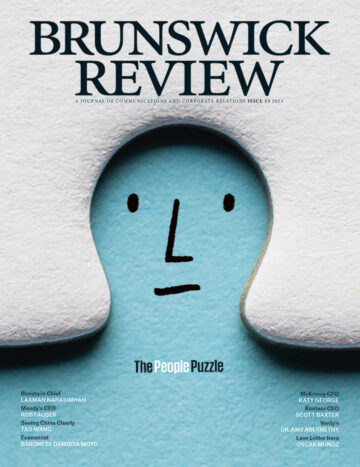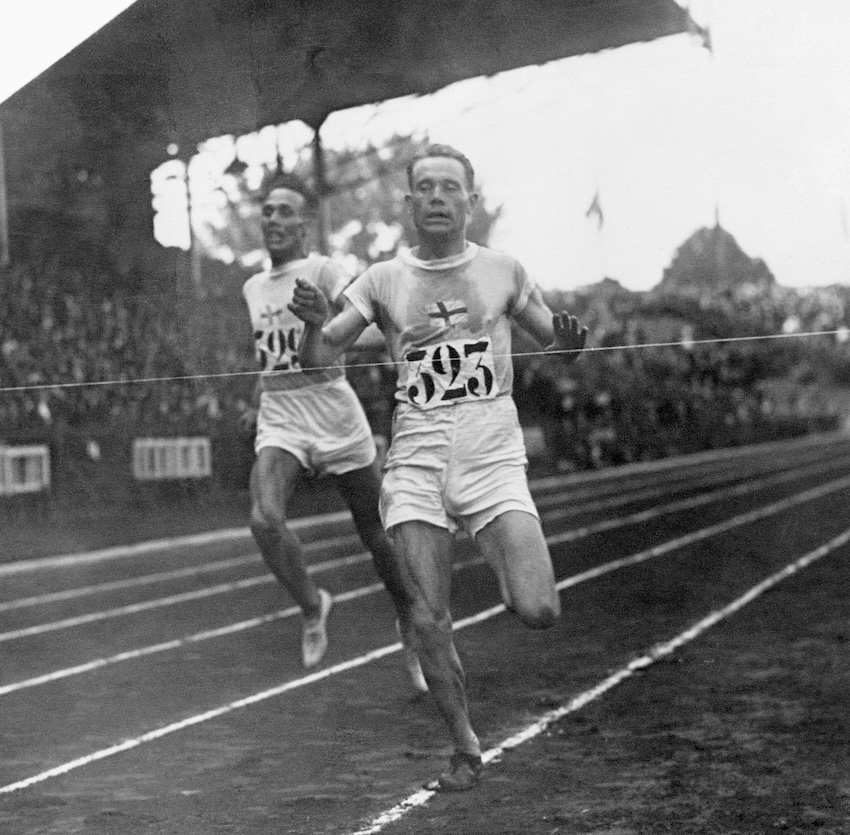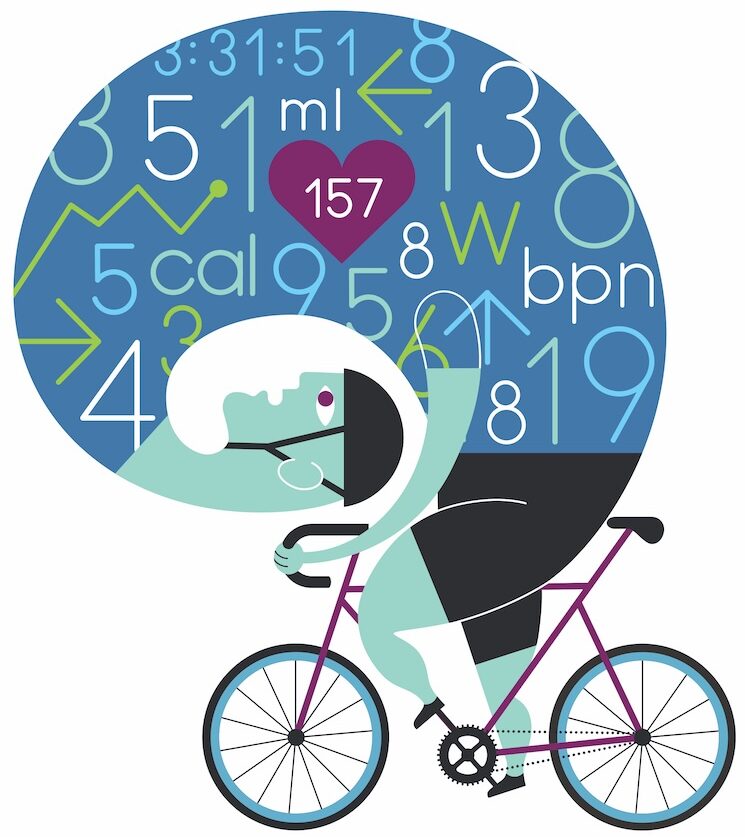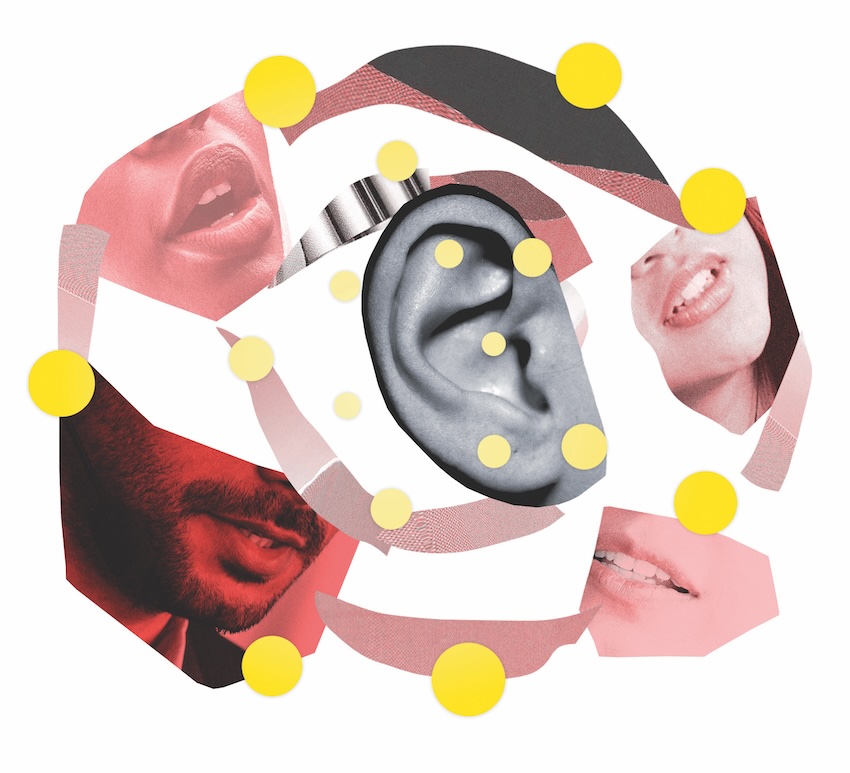Yes—but maybe not. It’s complicated. Scott Foster reports.
In July 2021, on something of a whim, I signed up for an 82-mile bike race, my first ever. It was also nearly twice as far as I’d ridden before. Seven months later, the robust training plan I’d envisioned hadn’t exactly materialized. The lingering pandemic, coupled with a Washington, DC winter, weren’t too motivating. To maximize the three months I had left to train, I bought a wearable fitness tracker.
Their benefits are clear: People who use fitness trackers walk, on average, 40 more minutes per day than people who don’t. Records in endurance sports keep falling for many reasons, but surely one is the level of sophistication with which athletes now track their training.
But as anyone who’s considered buying a device knows, figuring out which one to buy can feel overwhelming. There’s Amazfit and Fitbit, Whoop and Wahoo, Garmin and Polar, Coros and Suunto and Oura—and, of course, Apple, which in 2020, sold more watches than the entire Swiss watch industry. Accompanying these devices are apps that allow you to explore your health data in tremendous detail—and some even offer personalized training recommendations.
What ultimately sold me on the one I bought was that I saw a lot of professional cyclists and endurance athletes wearing them. If it worked for those superhumans, I figured it could work for me.
And it did—well, sort of.
I loved analyzing the numbers and tracking my progress. Training can be a constant game of second-guessing: Should I be going harder (or slower)? Am I doing enough (or too much, or too little)? The data, and the data-driven recommendations I got from the app, helped me train with confidence—and, very often, with restraint.
A former Division-1 college swimmer about 15 years past my prime, I knew I couldn’t push myself like I once did. I felt confident that I was training at, but not beyond, my limits. And it helped me feel like my body was deciding the training, not my excuses.
But the more time I spent with those numbers, the more I became aware of their limitations.
At first, all the data was encouraging and enlightening. Gradually, it ceased being either.
There’s the “nocebo effect,” where the constant focus on your health data actually worsens your health—people who wake up feeling fine, for instance, report feeling tired after finding out they registered a low “sleep score.” In 2022, The New York Times published an opinion piece where the writer, a 2:53 marathoner, confessed: “The more I used my watch to monitor my stress, the higher my stress levels rose.”
I was constantly monitoring my app. At first, all the data was encouraging and enlightening. Gradually, it ceased being either. A new question hovered over most everything I did: “How is this going to impact my performance?” Cycling, once an escape, became homework. Gone was the simple joy of spinning along the road on a nice spring day. That the phrase “data junkie” even exists suggests an awareness of how addictive and unhealthy our relationship with numbers can become.
The data also made me prone to self-flagellation. If I met up with friends for a few drinks or had a beer at dinner with my wife, the app would indicate an exceptionally poor recovery and recommend a light workout the next day, regardless of how I felt. Rather than looking at the overall picture of the progress I was making, I would beat myself up for making a “bad” decision the night before—one I’d be reminded of every time I opened the app.
Data’s power is closely tied to its quality. A growing body of research suggests that wearables are broadly accurate but far from exact. Tracking your heart rate through a sensor on your wrist, for instance, is less accurate than tracking it with a sensor strapped to your chest—and algorithms use your heart rate to calculate how well rested you are and how hard you worked. A 2017 study by Stanford University found that the most accurate tracker miscalculated calorie expenditure by 27%. Other studies have found wearables aren’t always precise at counting steps or measuring when you fall asleep.
The point isn’t that these devices aren’t useful—they clearly are. It’s that it can be easy to lose sight of the fact that the numbers these devices produce are approximate rather than precise.
On race day, I finished in the middle of the pack, 215th out of roughly 500. I was glad to have finished, glad my legs held up (barely) and glad to have enjoyed the day itself.
In one sense, the wearable was a great investment. It helped me train for the race and finish it. And along the way, it helped me make healthier decisions. I didn’t need a device to tell me to limit late nights, unhealthy food and alcohol, but its data convinced me to actually adjust my relationships with those behaviors.
And yet, in another sense, was it a great investment to spend money to turn something I loved into something I started to dread?
Data can be magical when we’re clear on what we want to measure and why. Yet that “why” question is one we seldom ask with our smartwatches or wearables, perhaps because the answer appears so obvious: I want to be faster, fitter, healthier, whatever.
But at what price? Something is gained with the watch and the data, but something—perhaps even more valuable—can be lost. The great explorer and naturalist Alexander von Humboldt once observed that: “What speaks to the soul escapes our measurements.”
I stopped monitoring my app daily in the spring of 2023 as the weather improved, the days grew longer and I was able to ride outside again. I glance at it every once in a while after a hard ride, but nowadays, far more important than maximizing my performance is enjoying the sheer delight of every ride.
Scott Foster is a former Associate with Brunswick Insight, the firm’s data and analysis team.
More from this issue

People Puzzle
Most read from this issue

Critical Moment: Paris Olympics, 1924




